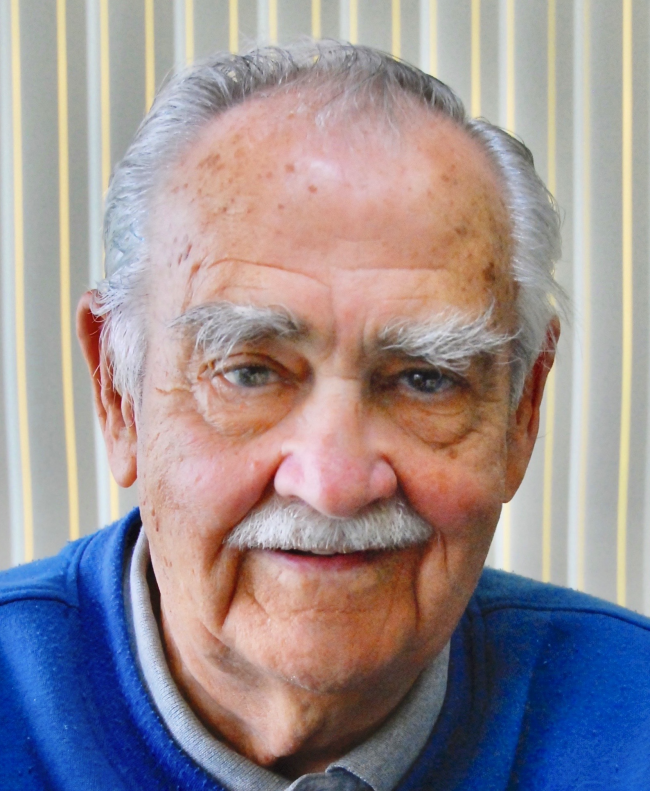Jerry's View: White Center- I wanted it to change
Mon, 05/27/2024
Publisher Emeritus Jerry Robinson, who passed in 2014 wrote the following for his autobiography "Listen to your father".
By Jerry Robinson
It was my first month as Publisher, Editor, Reporter, Salesman and Janitor of the White Center News. It was January of the year 1952. White Center was just emerging as a bustling shopping center on the southern border of Seattle, and remnants of its salty past still clung to its merchant body.
Despite its unsavory reputation, White Center was a busy place for many of its merchants. The Epicure was the best place to eat in the south end. Busey’s XXX across the street was a favorite hangout for teens. Later came Lou’s 19-Cent Hamburger. This then became the drive-in favorite of high-schoolers from Evergreen and Sealth.
From 1955 to 1965 White Center blossomed. At one time it boasted an A&P Grocery, Tradewell, Safeway, IGA Market Basket, and a Big Bear, These were all huge (for their day) supermarkets and they all used the paper so we were able to prosper for quite a while.
Then Burien, a scant five miles south, came alive in the mid-Fifties and White Center businesses started to feel the competitive crunch. Eventually, both furniture stores and all four appliance stores closed their doors. The three shoe stores hung on till the mid-Sixties; then they, too, bit the dust. Al’s Men's Shop and the White Center Department store closed up in the late Sixties. A& P, Tradewell, and Big Bear closed up.
Grocery chains to this day continue to do well, as do the two remaining drugstores, Bartell's and Thrifty. The taverns are still thriving, Dormer Restaurant is healthy and so are most of the service establishments.
At first we had to survive on 10-inch ads from stores like Bunge Hardware and Clemans Furniture. We had one bank, Guaranty National, but they had a monopoly and didn’t need us. Plus, it was managed by a troglodyte who resented this young newcomer (me) who wanted to make changes.
One of the changes I wanted was to tear down the disgraceful, dilapidated, rat- infested war housing. I worked hard to accomplish this.
The manager of the bank was also on the board of housing commissioners, and his bank was the depository for the projects. My idea didn’t sit well with him. Selling an ad to the bank proved difficult.
I was full of crusading spirit and also attacked the atrocious streets, the plethora of taverns, the unsightly store fronts and anything else I felt hurt the shopping district. I made a lot of enemies. More than once, I had businessmen tell me, “If you don’t like it here, why don’t you get the hell out?”
I’d been in business about two months when I joined the only service club in town, the Lions. They were a free-spirited, hell raising gang, famous for good works but not above dropping a water-soaked napkin on your chair if you foolishly got up for any reason. When they decided to put on a stag show, complete with French movies and strippers, I decided to cover it. They held it in the White Center Athletic Club, a converted Quonset hut nightclub run by Pete Desimone.
Pete was a man about 60 with a checkered past that included numerous clashes with the law. Pete saw a chance to make a buck so he took that ugly old building and turned it into a honky-tonk nightclub.
Those were the days when people were only allowed to drink in public at what were called bottle clubs. The house provided what was called a set-up, which consisted of mixer and glasses. You brought your own liquor and you could sit around a place with others and have a party. That was the theory. In practice, if the house knew you, they were more than happy to supply the liquor from their own mysterious origins.
Pete had fixed up the old Quonset hut pretty fancy, and it became kind of a focal point for nighttime activities. Finally, the night of the strip show arrived. I took my camera. During the strip show, for the heck of it I snapped the shutter. A number of White Center’s most prominent merchants were onstage, mixing it up with the girlies, when the photo flash went off. I knew it would have a shocking effect, so I quickly hid my camera behind me. I pinned it to the wall, against which I was standing
The house lights came on, and the madame shouted, “Find that camera!” Everybody looked at me, but I just shrugged, and put on my "not guilty" look. I was the picture of innocence. Pretty soon, they gave up and turned the lights down.
Later, someone (not me) must have called the cops, because during the showing of the porno movies (I had gone home, honest), I heard they raided the place. They would have gotten the film if a couple of athletic Lions hadn’t played keep-away with the film canister till they could sneak it out the back door.
I never did use the picture. But I did do a story on the raid. The Lions Club tamed down a lot. They even gave up the wet napkins.
Pete ran his club a couple more years, but the sheriff finally closed him down after another raid netted a dozen slot machines. We ran a picture of Sheriff Callahan smashing the one-arm bandits at the county dump.
White Center’s salty days were numbered. The Trucker’s Club--probably the wildest, meanest, baddest night spot, in a big room in back of the White Center Hotel (an eight-bedroom hostelry, not to be confused with the Hilton)--was padlocked for good shortly thereafter. All that was left of our shady side was a small-time bookie who also ran a small restaurant.


